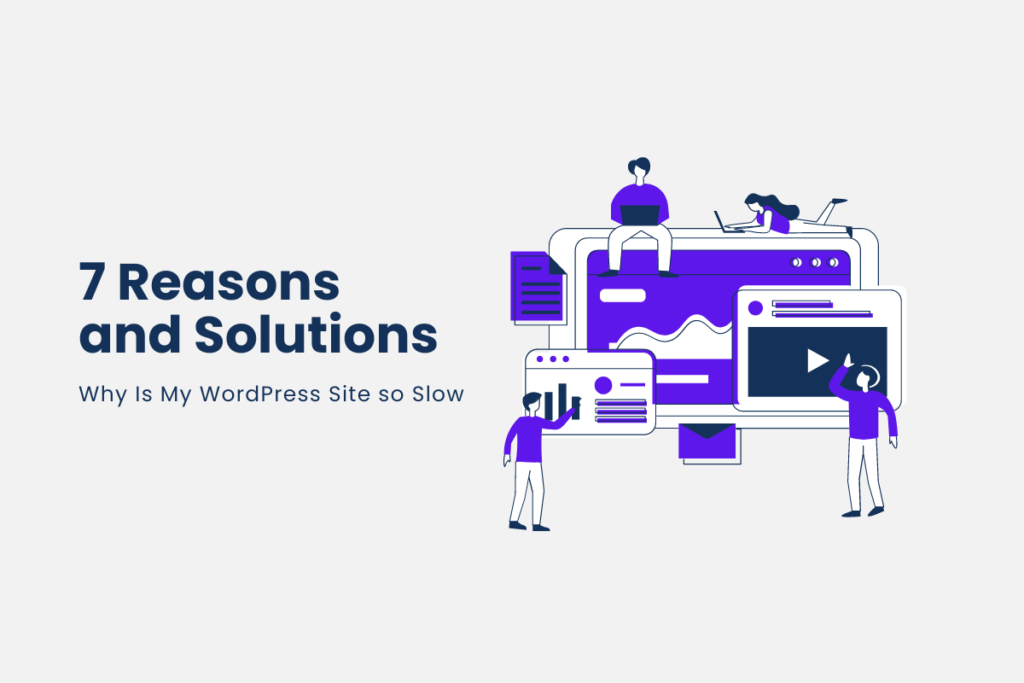Introduction
In the fast-paced digital world, speed is paramount. Your website’s speed can significantly impact user experience, search engine rankings, and conversion rates. If you’ve been scratching your head, wondering why your WordPress site is moving at a snail’s pace, fear not. In this article, we’ll explore seven common reasons for a sluggish WordPress site and provide practical solutions to turbocharge your website’s performance.
Bloated Themes and Plugins
Too Many Unused Themes and Plugins
One of the primary reasons your WordPress site might be crawling is the excessive use of themes and plugins. While these can enhance functionality, too many unused or unnecessary ones can weigh your site down. Each plugin adds extra code that needs to be processed, leading to slower load times.
Solution: Audit your plugins and themes regularly. Remove anything you no longer need or use. Opt for lightweight alternatives whenever possible.
Poorly Coded Themes and Plugins
Not all themes and plugins are created equal. Some are poorly coded and can significantly slow down your site. They might have inefficient code, be incompatible with your WordPress version, or conflict with other plugins.
Solution: Stick to well-established, reputable themes and plugins. Read user reviews and check for regular updates and support.
Unoptimized Images
Choosing the Wrong File Format
Images play a vital role in web design, but choosing the wrong file format can lead to slow loading times. Use JPEG for photographs and PNG for images with transparency. Avoid BMP and TIFF formats, which are bulky.
Solution: Before uploading images, optimize them using tools like Photoshop or online image compressors.
Neglecting Image Compression
Large, uncompressed images are a common culprit for sluggish websites. Compressing your images can significantly reduce their file size without compromising quality.
Solution: Consider using image compression plugins or online services to optimize your images for the web.
Web Hosting Issues
Shared Hosting Limitations
Shared hosting plans, while cost-effective, can result in slow website performance, especially during traffic spikes. You’re sharing resources with other websites on the same server.
Solution: Consider upgrading to a VPS or dedicated hosting plan for improved speed and reliability.
Server Location Matters
The physical location of your web server can affect loading times for users worldwide. A server closer to your target audience can provide faster access to your site.
Solution: Choose a hosting provider with server locations strategically positioned to serve your target audience efficiently.
Excessive HTTP Requests
Minify CSS and JavaScript Files
Multiple CSS and JavaScript files can slow down your site due to the increased number of HTTP requests. Minifying these files by removing unnecessary whitespace and comments can help.
Solution: Use WordPress plugins or online tools to minify CSS and JavaScript files.
Leverage Browser Caching
Browser caching allows visitors to store static files locally, reducing the need to re-download them with each visit. This can significantly boost page load times.
Solution: Enable browser caching through your WordPress settings or use caching plugins.
Lack of Content Caching
Utilizing Caching Plugins
Caching plugins generate static HTML files of your pages, reducing the need for dynamic page generation on each visit.
Solution: Install a caching plugin like W3 Total Cache or WP Super Cache and configure it to suit your site’s needs.
Implementing a Content Delivery Network (CDN)
CDNs distribute your website’s content across multiple servers worldwide, reducing the physical distance data must travel to reach users.
Solution: Subscribe to a CDN service like Cloudflare or MaxCDN to accelerate content delivery.
Unorganized Database
Regular Database Cleanup
WordPress stores various data in its database, including revisions, spam comments, and more. Over time, this can lead to database bloat and reduced performance.
Solution: Use database cleanup plugins to remove unnecessary data and optimize your database.
Optimizing Database Queries
Inefficient database queries can slow down your site. Optimizing them can significantly improve loading times.
Solution: Consider hiring a developer or using plugins like WP-Optimize to optimize your database queries.
Outdated WordPress Version
Keeping WordPress Core Updated
Running an outdated version of WordPress can expose your site to security vulnerabilities and performance issues.
Solution: Regularly update your WordPress core, themes, and plugins to ensure optimal performance and security.
Conclusion
A slow WordPress site can drive away visitors and harm your online presence. Addressing these seven common issues and implementing the suggested solutions can revitalize your site’s speed, providing a better user experience and potentially boosting your SEO rankings. Here are some more beginner guides for newbies.
FAQs
The ideal page load time is under 3 seconds. Anything longer can result in higher bounce rates.
While free hosting may be tempting, it often comes with limitations that can lead to slow performance. Consider investing in reliable hosting for better results.
A CDN can benefit websites of all sizes by improving content delivery speed. It’s a good idea to consider one if you want to enhance your site’s performance.
It’s advisable to clean up your database at least once a month to remove unnecessary data and keep it optimized.
Yes, updating themes and plugins is crucial for security and performance. Outdated components can lead to vulnerabilities and slow loading times.



